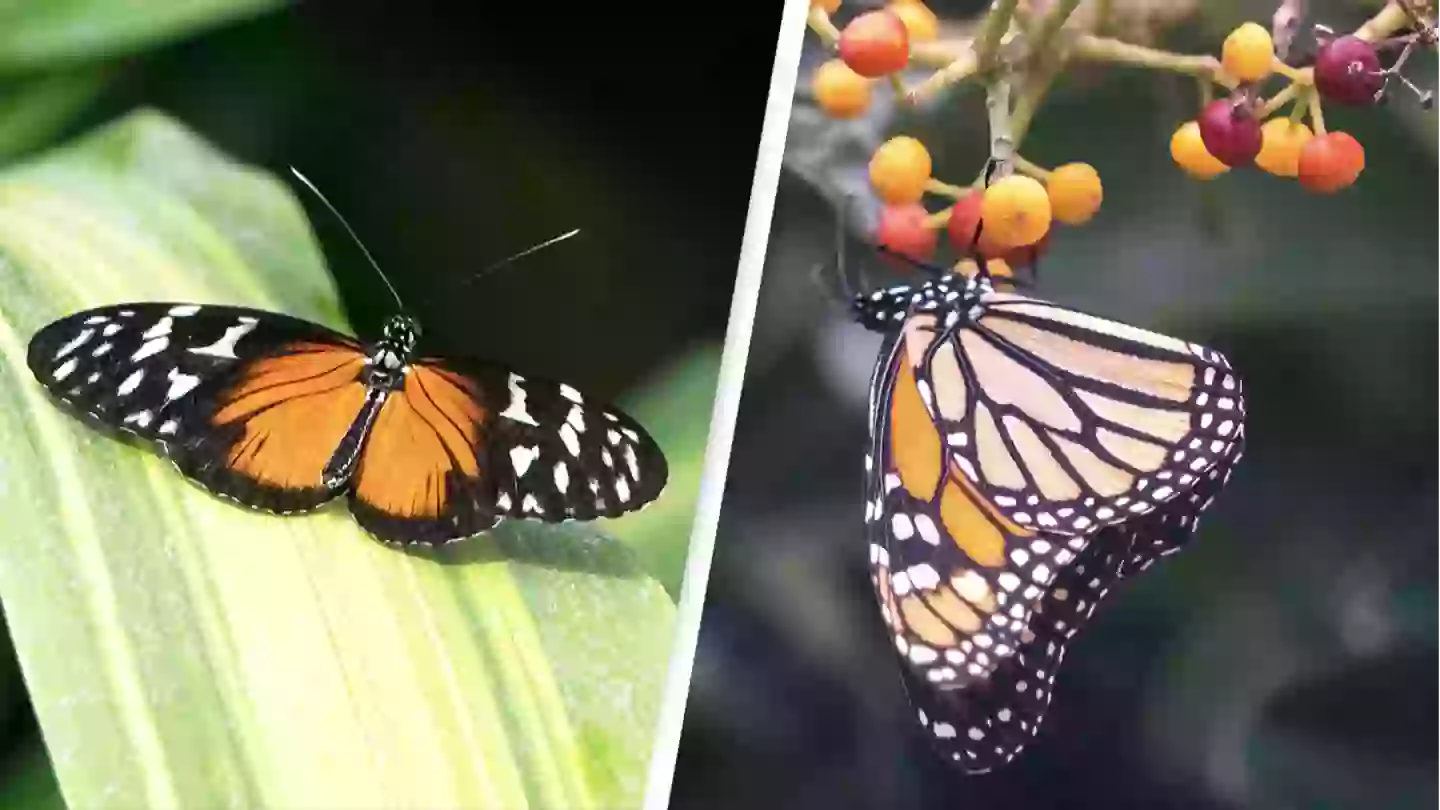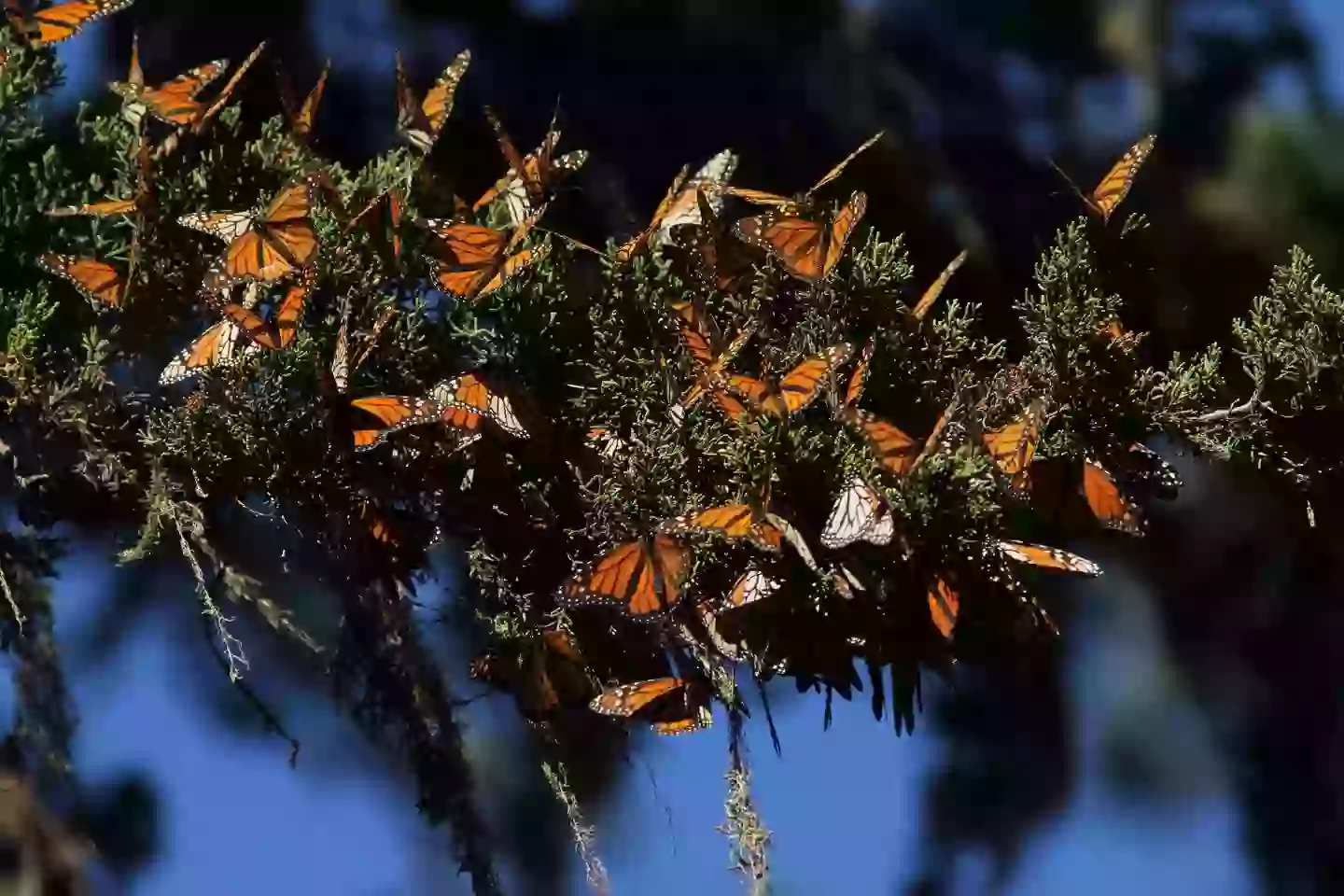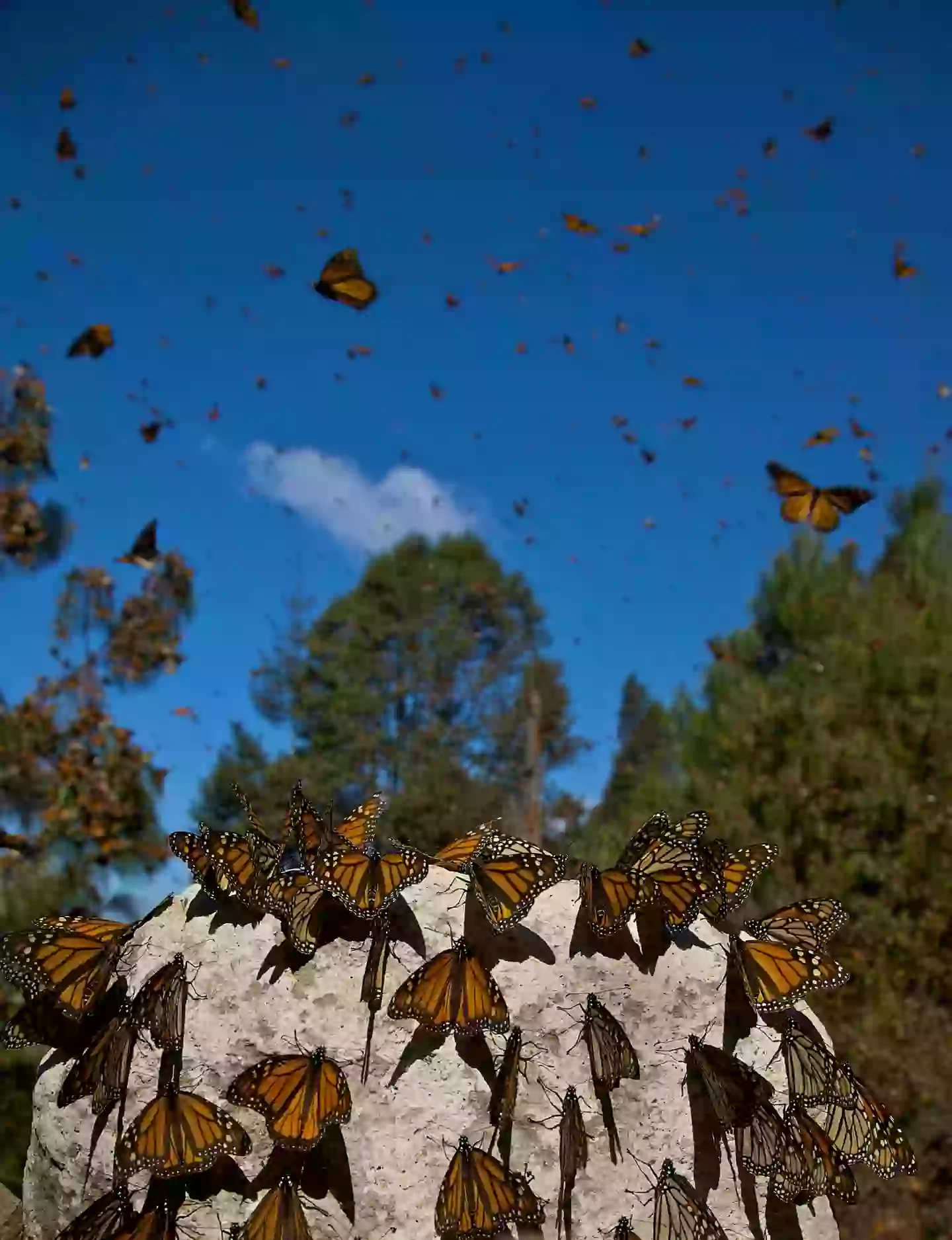
Migratory monarch butterflies are now endangered thanks to threats from habitat destruction and climate change, having been added to the International Union for the Conservation of Nature (IUCN) Red List of Threatened Species.
In North America, millions of monarch butterflies embark on the longest migration route of any known insect, travelling from their winter homes in Mexico and California to summer breeding grounds throughout the United States and Canada.
According to the IUCN, the native population of migratory monarch butterflies has shrunk by between 22 percent and 72 percent over the past decade, and are now considered endangered.
Advert
In a press release, the union cited legal and illegal logging and deforestation as a factor, saying such practices have already destroyed ‘substantial’ areas of the butterflies’ winter shelter in Mexico and California. Pesticides and herbicides used in intensive agriculture also kill butterflies – and the plant that their larvae feed on – while climate change has become a ‘fast-growing threat’ thanks to drought, temperature extremes and severe weather.

Dr Bruno Oberle, IUCN Director General, said: “Today’s Red List update highlights the fragility of nature’s wonders, such as the unique spectacle of monarch butterflies migrating across thousands of kilometres.
“To preserve the rich diversity of nature we need effective, fairly governed protected and conserved areas, alongside decisive action to tackle climate change and restore ecosystems. In turn, conserving biodiversity supports communities by providing essential services such as food, water and sustainable jobs.”
Advert
Non-migratory monarch butterflies in Central and South America were not designated as endangered in the IUCN’s update, with the list now including 147,517 species – of which 41,459 are threatened with extinction.
Anna Walker, a member of the IUCN SSC Butterfly and Moth Specialist Group and Species Survival Officer at the New Mexico BioPark Society, who led the monarch butterfly assessment, said there are still ways to help the struggling butterfly population.

“It is difficult to watch monarch butterflies and their extraordinary migration teeter on the edge of collapse, but there are signs of hope,” Walker said.
Advert
“So many people and organisations have come together to try and protect this butterfly and its habitats. From planting native milkweed and reducing pesticide use to supporting the protection of overwintering sites and contributing to community science, we all have a role to play in making sure this iconic insect makes a full recovery.”
Sophie Ledger, who is also a member of the IUCN SSC Butterfly and Moth Specialist Group and a researcher at Zoological Society of London Indicators & Assessments Unit said it was ‘tragic’ to see the species threatened with extinction amid the ‘global biodiversity crisis’.
She added: “It is critical to uncover what is happening with diverse and functionally important species such as these before it’s too late.”
If you have a story you want to tell, send it to UNILAD via [email protected]
Topics: Animals, World News